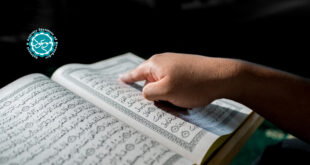Therefore, this verse may be interpreted thus: Tell women to wear their robe such that it covers the whole body and hides it from the eyes of outsiders. If they do so, they will be known as chaste women. Thus, they will avoid the attention of strangers and will not be molested.
This verse indicates that Muslim women must wear conservative, concealing, and plain clothes when leaving their house and thus prevent ethical and social corruption. Such conduct is advantageous to women, men, and youths in general.
Third Verse
The Quran states:
“O women of the prophet! You are not as other women, if you are pious. So speak not tenderly to make those who have sickness in their heart lustful, but speak in a normal manner. And stay in your homes and do not flaunt yourselves as in the Age of Ignorance.”7
In this verse, women are given three recommendations:
1. That they not speak in a tender and soft manner since speaking in this manner may incite the lusts of impure men
2. That they stay at home
3. That they not display themselves before outsiders without the necessary covering and not flaunt themselves and show off their beauty and cosmetics
Even though this verse addresses the wives and daughters of the prophet, its instructions apply to all women.
It must be said that the statement قَرْنَ فی بُیُوتِکُنَّ does not mean that the wives of the Prophet (S) and other women must always stay at home and never leave the house; because, as I have previously stated, women are true members of the society and have responsibilities that necessitate leaving the house. Moreover, at the time of the Prophet (S) women would exit their homes and they would present themselves at mosques.
They would listen to the words of the Prophet (S) and would ask their religious questions. Indeed, many women are narrators of Hadith and many narrators transmit Hadith from them. They would participate in battles and would treat and minister to the wounded. The Prophet’s (S) wives would also participate in battles, although they were not commissioned to fight.
It was not the manner of the Prophet (S) and his followers to confine women to their homes, nor does this verse intend such; rather, it means that women must be devoted to their homes and regard it as their true place. Moreover, they should favor household management, parenting, and caring for their husband. They must feel responsible for household issues and eschew loitering, walking aimlessly in the streets, unrestraint, and imprudence.
Maharim8
There are two types of men in regard to each woman: mahram and non-mahram.
That which has been stated regarding the Hijab of women pertains to non-mahram men. Observing Hijab is not obligatory before mahram men. Mahram men consist of:
1. One’s father’s father, grandfather, and all direct paternal ancestors
2. One’s mother’s father, grandfather, and all direct maternal ancestors
3. One’s brother and his children and descendants
4. Children of one’s sisters and their descendants
5. One’s paternal uncle, his paternal uncle, and so on
6. One’s maternal uncle, his maternal uncle, and so on
7. One’s husband and father-in-law
8. One’s father-in-law’s and mother-in-law’s father, grandfather, and so on
9. One’s husband’s sons and their descendants
10. One’s sons and all their descendants
11. One’s daughter’s descendants
12. One’s sons-in-law and their sons-in-law, and so on
These individuals may see a woman’s body9 and women are not obliged to cover themselves in front of them. Of course, this is only on the condition that they do not look upon her for sexual pleasure; otherwise, one cannot even look upon one’s maharim or children. Moreover, if it is for pleasure, women must not even look at other women, and men must not look at other men.
The Limits of Hijab
The necessity of Hijab is one of the indisputable commandments [ahkam] of Islam and all religious jurisprudents [fuqaha] are unanimous in this issue. Women are required to cover their bodies from non-mahram men using chadors,10 abas,11 long shirts, robes, overcoats, loose coveralls, montoes, veils, headscarves, or any other means that can cover the whole body. Islam does not enforce any specific form of covering.
There is no disagreement regarding the necessity of observing Hijab. However, there is dispute among religious jurisprudents regarding covering the face and the hands up to the wrists. Some religious jurisprudents regard covering these obligatory or at least advise precaution [ihtiyat]. Even so, most religious jurisprudents do not consider covering these areas obligatory and cite various rationales for its superfluity:
Reason One
Hadith that directly and explicitly refute the necessity of covering the face and hands:
Mas‘adah ibn Ziyad said: “I heard from (Imam) Ja‘far (‘a) that in answer to a question about the apparent adornments of women he replied: ‘The face and two hands.’”12
In answer to a person who asked, “Which parts of a woman can a man who is not mahram look at?” the noble Imam Sadiq (‘a) answered, “The face, two hands, and two feet.”13
Ali ibn Ja‘far said, “I asked my brother, Musa ibn Ja‘far (‘a), ‘Which parts of a non-mahram woman can a man look at?’ he replied, ‘The face, hands, and the area of a bracelet.’”14
Ali ibn Sawid said, ‘I said to Musa ibn Ja‘far (‘a), ‘I have been afflicted with looking at a beautiful woman and I like to look at her at all times, what should I do?’ He answered, ‘O ‘Ali! It has no problem if you have good intentions, but I warn you of fornication because it repels blessings and destroys one’s religion.’”15
Mufadhdhal stated, “I said to Imam Sadiq (‘a), ‘May I be sacrificed for you! What must be done regarding a woman who traveled with non-mahram men and died with no accompanying women?’ He answered, ‘They must wash [ghusl] the areas of Tayammum, but they must not touch her and must not expose that which Allah has appointed to be covered.’ Mufadhdhal said, ‘Then what should be done?’ He replied, ‘First, one must wash the inner surface of her hands, then her face, then the outer surface of her hands.’”16

 Mouood Mouood English Edition
Mouood Mouood English Edition



